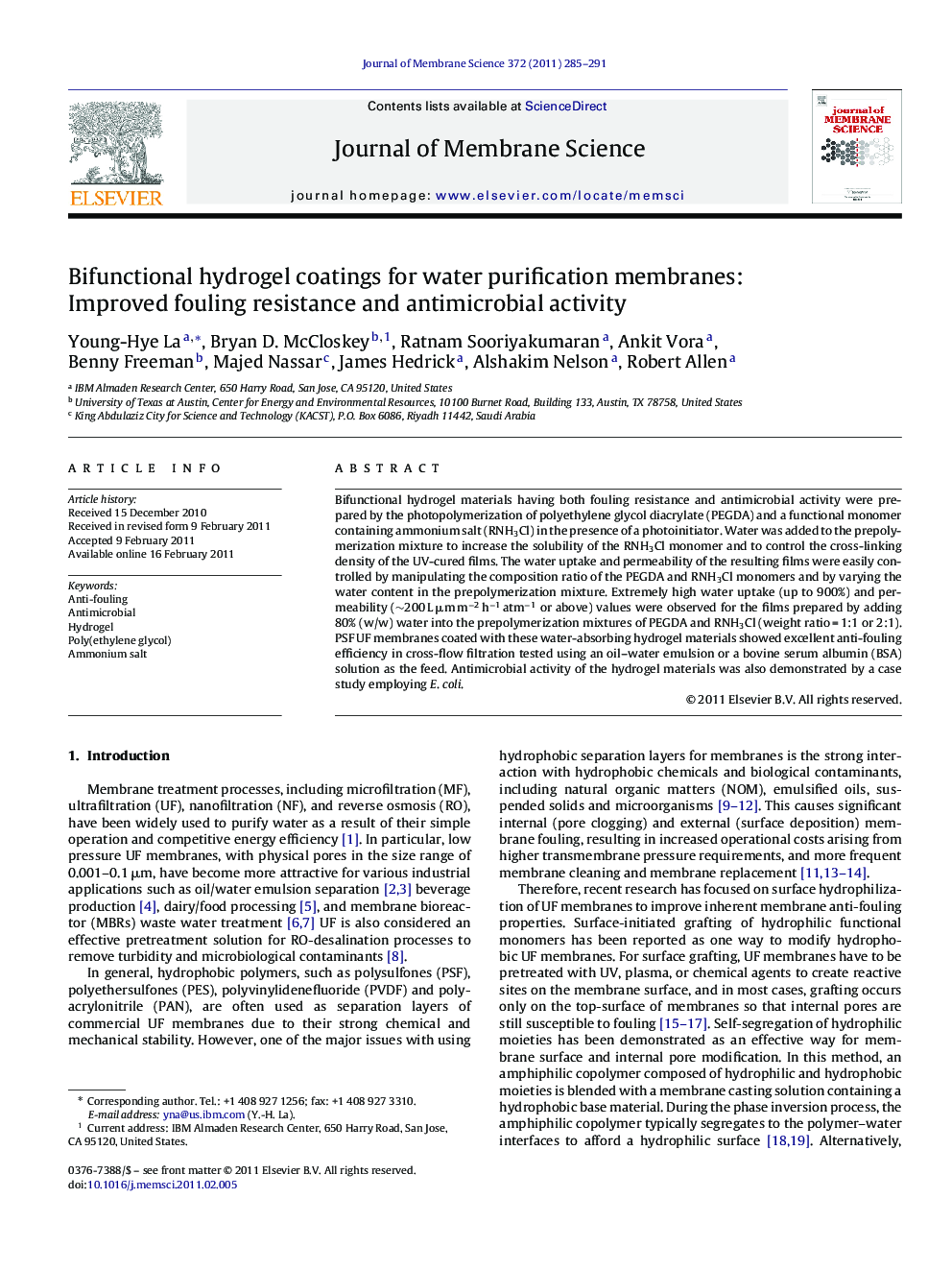| Article ID | Journal | Published Year | Pages | File Type |
|---|---|---|---|---|
| 635474 | Journal of Membrane Science | 2011 | 7 Pages |
Bifunctional hydrogel materials having both fouling resistance and antimicrobial activity were prepared by the photopolymerization of polyethylene glycol diacrylate (PEGDA) and a functional monomer containing ammonium salt (RNH3Cl) in the presence of a photoinitiator. Water was added to the prepolymerization mixture to increase the solubility of the RNH3Cl monomer and to control the cross-linking density of the UV-cured films. The water uptake and permeability of the resulting films were easily controlled by manipulating the composition ratio of the PEGDA and RNH3Cl monomers and by varying the water content in the prepolymerization mixture. Extremely high water uptake (up to 900%) and permeability (∼200 L μm m−2 h−1 atm−1 or above) values were observed for the films prepared by adding 80% (w/w) water into the prepolymerization mixtures of PEGDA and RNH3Cl (weight ratio = 1:1 or 2:1). PSF UF membranes coated with these water-absorbing hydrogel materials showed excellent anti-fouling efficiency in cross-flow filtration tested using an oil–water emulsion or a bovine serum albumin (BSA) solution as the feed. Antimicrobial activity of the hydrogel materials was also demonstrated by a case study employing E. coli.
Research highlights► Bifunctional PEGDA-RNH3Cl hydrogels exhibited extremely high water uptake and permeability. ► The hydrogel coated UF membranes showed outstanding protein- and oil-fouling resistance. ► The ammonium moiety in the hydrogel coatings strongly restricts cell-initiated biofilm growth.
